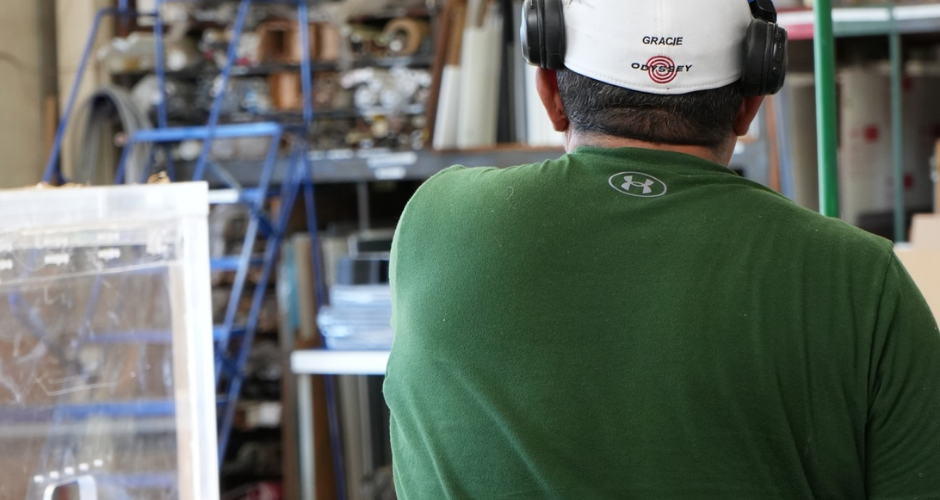From Aerospace to Architecture: The Endless Applications of Industrial Plastics
- Revvia Assistant
- 5 days ago
- 3 min read

Plastics have come a long way from their early days as simple consumer materials. Today, they’re at the heart of some of the most advanced and demanding industries in the world. From aircraft components that soar miles above the earth to architectural masterpieces that define modern skylines, industrial plastics have become synonymous with innovation, strength, and versatility.
Thanks to advancements in plastic fabrication, acrylic manufacturing, and custom engineering, these materials are no longer seen as secondary options, they’re essential elements of durable, high-performance design.
Lifting Innovation: Plastics in Aerospace and Transportation
In aerospace, where every ounce matters, the strength-to-weight ratio of materials can determine performance, safety, and efficiency. That’s why industrial plastics have become a staple in aircraft design. Components made through plastic fabrication can replace heavier metal parts while maintaining or even exceeding strength and durability standards.
Plastics such as polycarbonate, PEEK, and acrylic are commonly used in aircraft windows, cabin panels, and structural components. Their lightweight nature helps improve fuel efficiency, while their ability to resist impact and corrosion enhances safety and longevity.
But it’s not just aerospace, automotive and marine industries have also embraced these materials. Plastic fuel tanks, dashboards, and trim components contribute to lighter, more fuel-efficient vehicles. In boats, durable and weather-resistant plastics are used for hulls, decks, and windshields, offering long-term resilience against moisture and UV damage.
Simply put, advanced plastics are propelling transportation forward, literally and figuratively.
Building the Future: Plastics in Architecture and Construction
When you look at modern architectural design, it’s impossible not to see the influence of plastics. Whether it’s a stunning acrylic canopy, a translucent wall panel, or a sleek custom display, industrial plastics are redefining how buildings look and perform.
Through acrylic manufacturing, architects and builders can achieve design goals that once seemed impossible. Acrylic is not only beautiful, offering glass-like clarity, but also stronger, lighter, and more shatter-resistant. It’s used in skylights, façades, signage, and interior partitions, blending aesthetics with practicality.
Meanwhile, plastic fabricators play a crucial role in shaping these materials into precise, ready-to-install components. Using advanced techniques such as CNC machining, thermoforming, and laser cutting, fabricators can create pieces that fit exact specifications, whether for a small boutique installation or a large-scale commercial structure.
Durability is another key advantage. Industrial plastics resist corrosion, weathering, and UV degradation, making them ideal for both indoor and outdoor applications. As sustainability becomes more important in the building industry, recyclable plastics and energy-efficient fabrication processes are further solidifying their place in modern design.
Precision in Practice: Plastics in Industrial and Commercial Applications
The versatility of industrial plastics extends far beyond construction and transportation, they’re critical in manufacturing, healthcare, electronics, and countless other fields.
In manufacturing, custom plastic fabrication enables the creation of durable machine guards, housings, and components that improve safety and performance. Plastics like PVC, ABS, and nylon are chosen for their resistance to chemicals, impact, and temperature, making them ideal for demanding environments.
In healthcare, acrylic and polycarbonate are used in everything from medical enclosures and laboratory equipment to protective shields. Their transparency, ease of cleaning, and resistance to bacteria make them indispensable in sterile environments.
Even in retail and commercial settings, acrylic manufacturing produces stunning displays, fixtures, and signage that attract attention while withstanding everyday wear. For product designers, the ability to shape and customize plastics offers endless opportunities for innovation.
Whether it’s a precision part on a factory floor or an eye-catching architectural feature, plastic fabricators are the experts behind the scenes, transforming raw materials into functional and beautiful results.
Why Industrial Plastics Are Here to Stay
Industrial plastics offer a rare combination of qualities: strength, lightness, resilience, and versatility. They can mimic the clarity of glass, the strength of metal, and the flexibility of wood, all while offering cost and environmental advantages.
Their applications span industries and continue to expand as fabrication technology evolves. With advances in recycling, bioplastics, and digital fabrication methods, the future of industrial plastics looks not only innovative but also sustainable.
Build Smarter with Industrial Plastics
From the skies above to the structures that shape our cities, industrial plastics are redefining what’s possible across industries. Through plastic fabrication and acrylic manufacturing, plastic fabricators are creating solutions that are lighter, stronger, and more efficient than ever before.
Ready to bring the power of industrial plastics to your next project? Partner with expert fabricators who can turn your ideas into durable, high-performance realities.
.png)




Comments